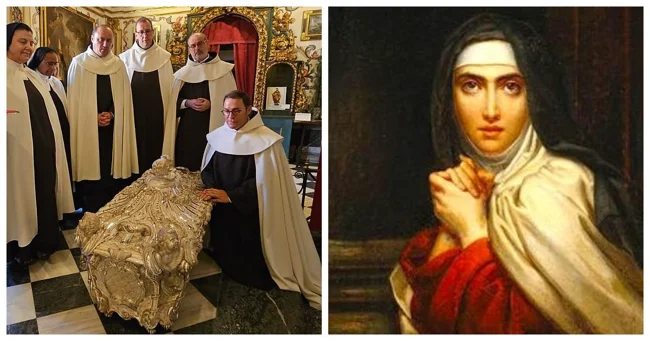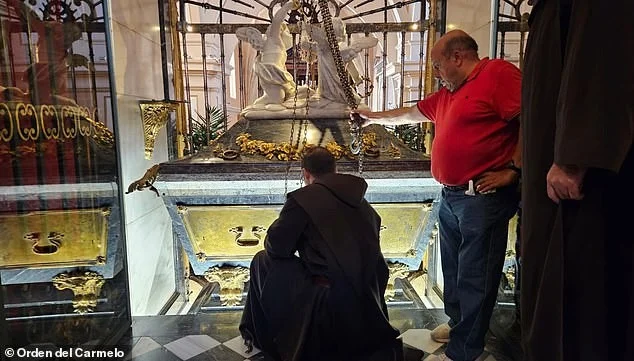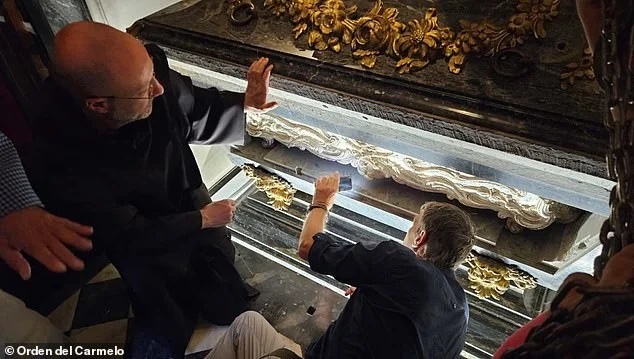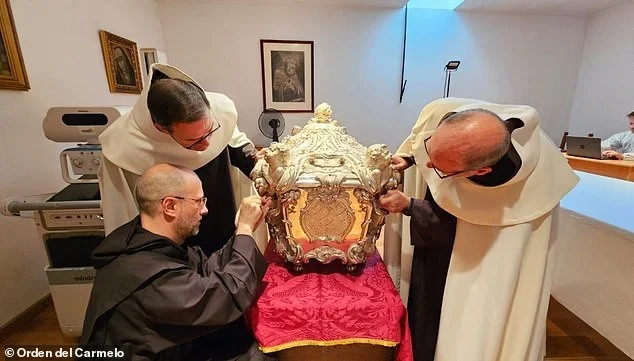Carmelite nun surprised scientists 450 years after her death (7 photos)
More than four centuries after her death in 1582, St. Teresa of Avila is once again the subject of intense scrutiny among believers around the world. Her body was exhumed in late August — and found to have not undergone the usual process of decomposition. 
A team of scientists compared photographs of the remains taken in 1914 with their current state and found that the saint’s face was still clearly visible and her remains were “incorrupt.” The silver coffin, encased in marble, was opened so scientists could study her state of health at the time of her death. 
The exhumation of St. Teresa's body was carried out by Marco Chiesa, the general postulator of the Discalced Carmelite order, in the Diocese of Avila in Spain on August 28. The Catholic Church shared the news on social media, writing, "Her body is still incorrupt. Seek God's miracles." 
After opening the tomb, the team of doctors compared photographs of St. Teresa's face and feet taken in 1914 with the current state. However, they did not publish these images, citing the fact that the old photographs were black and white, and therefore "difficult to make a comparison." Chiesa noted that the skin color cannot be determined because it is mummified, but the facial features - especially in the middle part - are clearly distinguishable. This was also confirmed by medical experts.
Saint Teresa is the patron saint of chess players, lace makers, the needy, the orphaned, members of religious orders, people ridiculed for their piety, and the sick. She was a Spanish nun and became the first woman to be elevated to the rank of Doctor of the Church in 1970, an honor given to deceased saints for their significant contributions to Church teaching. Saint Teresa was canonized in March 1622. 
Since her body was last exhumed, it has been described as "incorrupt," meaning it has not undergone the normal process of decomposition after death. Researchers want to find out why it hasn’t collapsed yet, and hope it could provide information on how to preserve relics in the future. Chiesa confirmed they are still in the early stages of analyzing St. Teresa’s body, adding that it is too early to reveal details of additional research. The diocese has taken strict measures to protect the saint’s remains, including requiring 10 keys to access her coffin.
Three are in the possession of the Duke of Alba, three are in the possession of the city of Alba de Tormes, and three are in the possession of the Superior General of the Discalced Carmelites in Rome. A tenth key — known as the King’s Key — is also needed to access St. Teresa’s remains: three are needed to open the outer gate, three to open the tomb, and four to open the coffin. 
Her remains have been moved to a locked room where a team of doctors and scientists will conduct a visual examination, take photographs and X-rays of the remains. Samples will be sent to a lab in Italy, and it is expected to take several months before the data is fully compiled and made public.
"The Order believes that this work must be carried out, and it is the experts who will give an informed opinion," Chiesa said. "We know that as a result of such studies we can obtain very interesting data about Teresa, as well as recommendations for the preservation of the relics, but this will be at a later stage." 
While studying the body of Saint Teresa, experts also paid attention to the state of her health - she had heel spurs on her feet. These are growths of calcium deposits on the bottom of the heel bone, which cause severe pain when walking. Saint Teresa also suffered from convulsions, stomach problems, dizziness and loss of consciousness. In her memoirs, she explained her symptoms by saying that she had a strong connection with God.
“We know that in her last years she had difficulty walking because of the pains that she herself describes,” Chiesa explained. “Sometimes, by studying the body, you can learn more about a person. When we analyzed her foot, we saw that she had heel spurs, which made walking almost impossible. But she still made it to Alba de Tormes and only then died."
In 1582, when Saint Teresa was about 67 years old and already ill, she went to Alba de Tormes to visit her old friend Anne Bartholomew. Chiesa says that despite her illness, Saint Teresa persevered on her journey. On the way she became exhausted and seriously ill, and three days after Saint Teresa and her companion arrived at the local monastery, she said to Anne: "At last, my daughter, I have reached the house of death." 
St. Teresa's tomb was last opened in 1914, after Father Clemente de los Santos, then the superior general of the Discalced Carmelites, said he wanted to see the bodies of the founding saints during a visit to Spain. At the time, the Avila diocese said the body was still "perfectly incorrupt" as it had been when it was first opened in 1750.
























